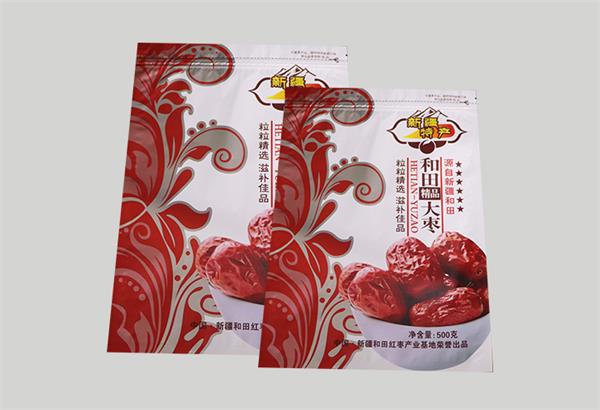濟(jì)南方便袋:保鮮膜和塑料袋區(qū)別是什么���?
保鮮膜和塑料袋都是人們生活中經(jīng)常用來包裹食物的塑料制品。很多人覺得保鮮食物用哪種都無所謂����,小編在這里要告訴大家,其實(shí)這兩者之間還是有區(qū)別的��,接下來大家一起來了解保鮮膜和塑料袋區(qū)別是什么���。
Plastic wrap and plastic bags are plastic products that are often used to wrap food in people's lives. Many people think it doesn't matter which kind of fresh-keeping food is used. Xiaobian wants to tell you that there is a difference between the two. Next, let's learn about the difference between fresh-keeping film and plastic bag.
保鮮膜一般是使用以下三種材質(zhì)制成:聚乙烯(PE)�、聚氯乙烯(PVC)�、聚偏二氯乙烯(PVDC)。其中�,PE、PVDC塑料袋相對(duì)���,PE主要用于水果蔬菜的包裝���,PVDC主要用于一些熟食����、火腿的包裝���。
The fresh-keeping film is generally made of the following three materials: Polyethylene (PE), polyvinyl chloride (PVC) and polyvinylidene chloride (PVDC). Among them, PE and PVDC plastic bags are relatively safe. PE is mainly used for the packaging of fruits and vegetables, and PVDC is mainly used for the packaging of some cooked food and ham.
塑料袋原材料一般是高密度聚乙烯和低密度聚乙烯���,前者就是的購物袋,摸起來很硬��,后者多用于包裝食品�,摸起來較軟����。像是紅、黑���、藍(lán)等深色塑料袋大都是使用回收的廢舊塑料制品重新加工而成���,嚴(yán)禁直接裝食品����。
The raw materials of plastic bags are generally high-density polyethylene (HDPE) and low-density polyethylene (LDPE). The former is the shopping bag in the supermarket, which feels very hard, while the latter is mostly used for packaging food, which feels soft. Dark plastic bags such as red, black and blue are mostly reprocessed from recycled waste plastic products. It is strictly forbidden to directly load food.
保鮮膜的特殊工藝�����,具有良好的透氣性和保鮮性能�����。而普通塑料袋使用時(shí)間一久就會(huì)使得食物變質(zhì)����,并且材質(zhì)也不如保鮮袋。所以�,保鮮袋更適合直接裝食物。
The special technology of fresh-keeping film has good air permeability and fresh-keeping performance. The ordinary plastic bags will deteriorate the food if they are used for a long time, and the material is not as safe as the fresh-keeping bags. Therefore, fresh-keeping bags are more suitable for direct food.

濟(jì)南方便袋
保鮮袋怎么用:
How to use fresh-keeping bags:
1����、保持果蔬新鮮:草莓、葡萄�、花椰菜、黃瓜���、娃娃菜這些新鮮水果和蔬菜����,放入保鮮袋再放入冰箱能延長(zhǎng)儲(chǔ)藏 時(shí)間。西瓜����、冬瓜這些分量大的新鮮水果和蔬菜切開后,一次吃不完�,放一兩天切面處容易腐爛,再吃時(shí)不得不切去腐爛部分����,即浪費(fèi)又不衛(wèi)生。這個(gè)時(shí)候你就可以把它們放入保鮮袋中��,既不會(huì)竄味兒��,又能延長(zhǎng)儲(chǔ)藏時(shí)間��。
1. Keep fruits and vegetables fresh: strawberries, grapes, broccoli, cucumbers, baby vegetables and other fresh fruits and vegetables can be stored in a fresh-keeping bag and then in the refrigerator to extend the storage time. Watermelon and wax gourd, which are fresh fruits and vegetables with large quantities, can't be eaten at one time. If they are kept for oneortwo days, the cut surface is easy to rot. when they are eaten again, they have to cut off the rotten part, which is wasteful and unsanitary. At this time, you can put them in the fresh-keeping bag, which will not make them smell, but also prolong the storage time.
2��、蒸雞蛋時(shí)��,打散雞蛋�����、碗里加過水���、撇掉上面的沫子�����,然后在碗上套一個(gè)保鮮袋��,或者是覆蓋一層保鮮膜�,蒸出來的雞蛋羹沒有氣孔��,嫩滑爽口����,小編親測(cè)有效。
2. When steaming eggs, break up the eggs, add water in the bowl, skim off the foam, and then put a fresh-keeping bag on the bowl, or cover it with a layer of fresh-keeping film. The steamed egg soup has no pores, is tender, smooth and refreshing, and is effective in small-scale test.
3�����、用保鮮袋把肉食和蔬果分開存放���,避免食物細(xì)菌交叉感染�,更加衛(wèi)生合理����,冰箱看起來也更整潔了�����。
3. Store meat, vegetables and fruits separately with fresh-keeping bags to avoid cross infection of food bacteria, which is more hygienic and reasonable, and the refrigerator looks cleaner.
在生活中�,大家還是要懂得保鮮膜和塑料袋區(qū)別�,對(duì)不同的食物要選擇適當(dāng)?shù)谋ur用品,不然會(huì)適得其反����。
In life, we still need to know the difference between fresh-keeping film and plastic bags, and choose appropriate fresh-keeping supplies for different foods, otherwise it will backfire.
 18764138233
18764138233
 18764138233
18764138233

 18764138233
18764138233
